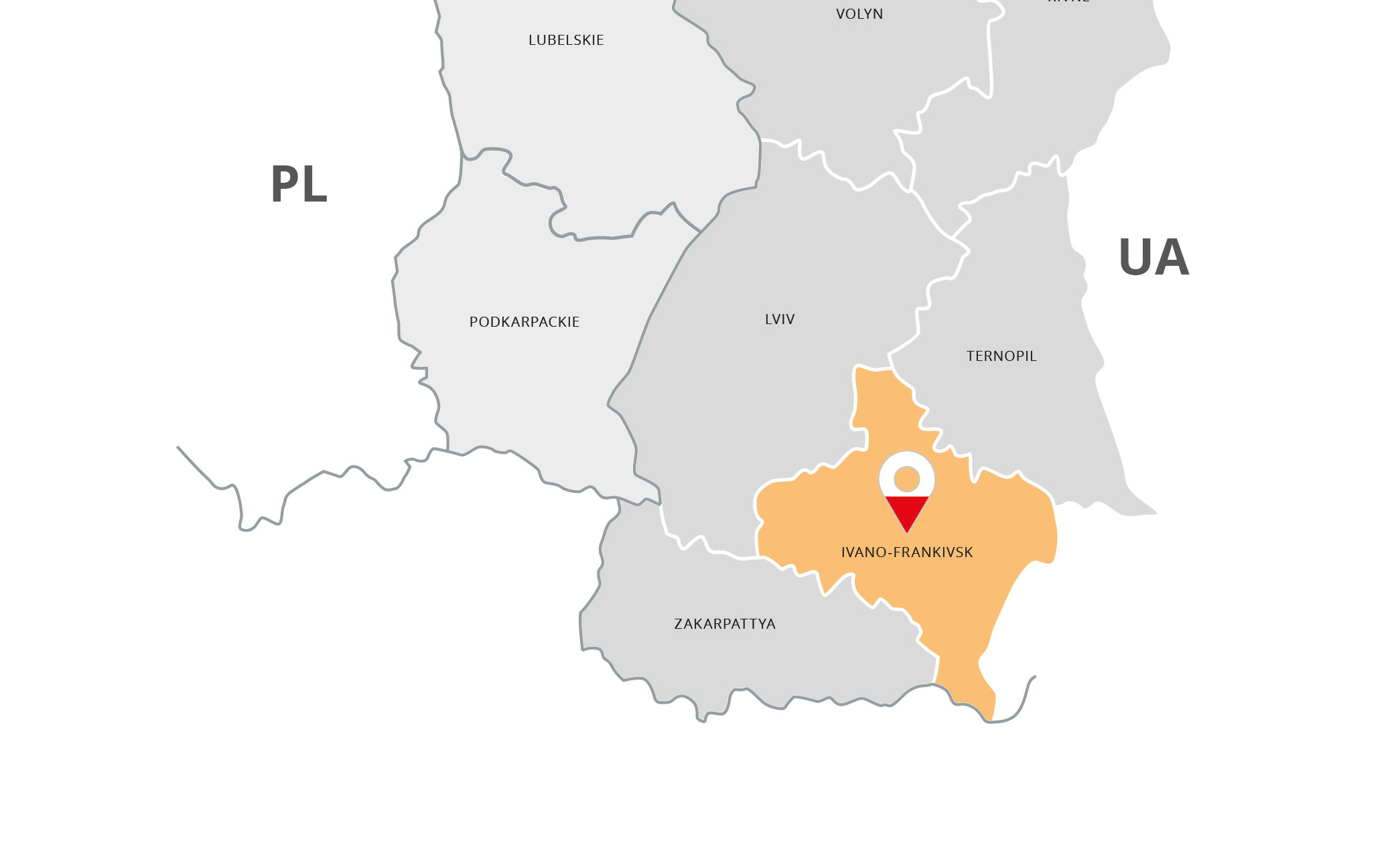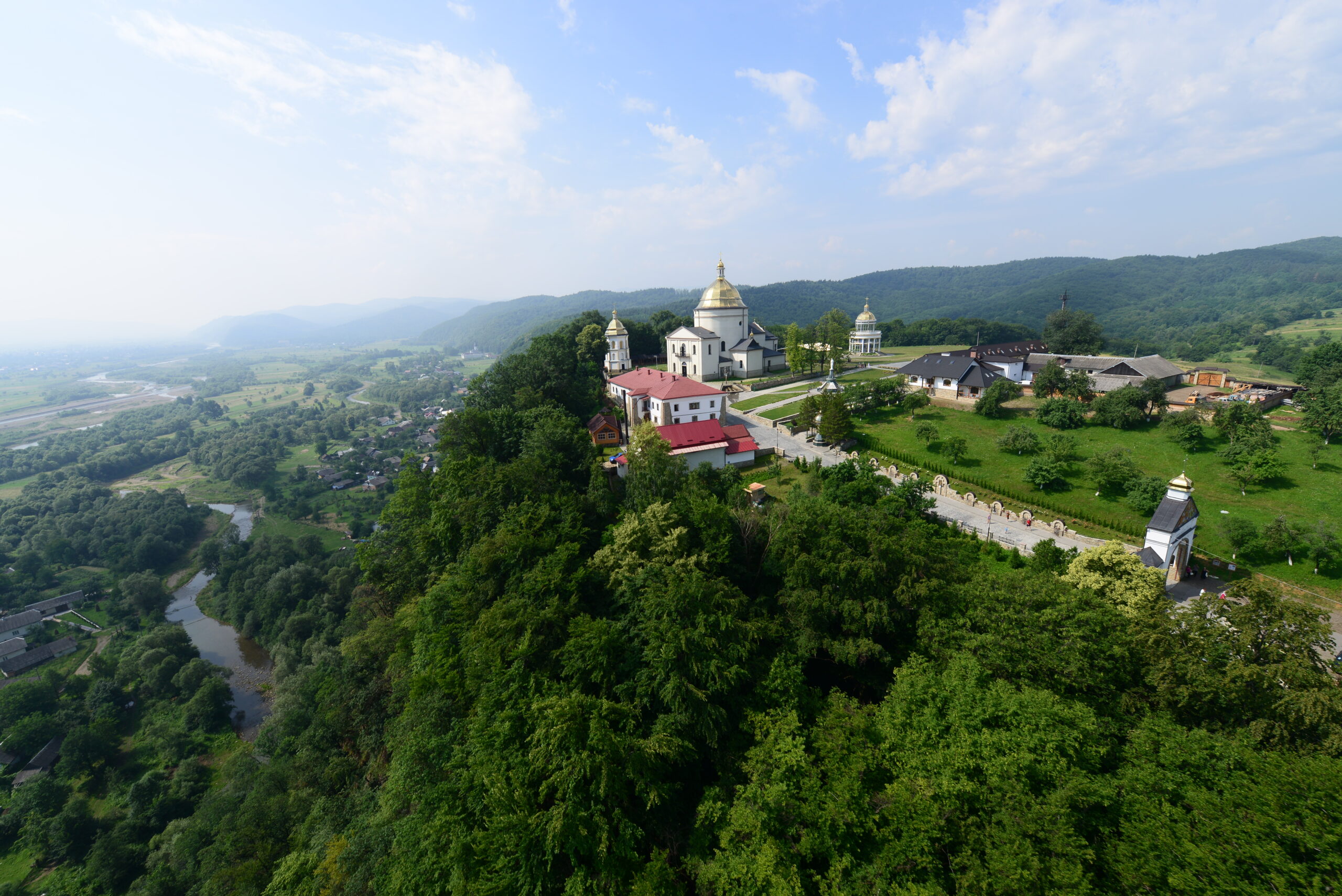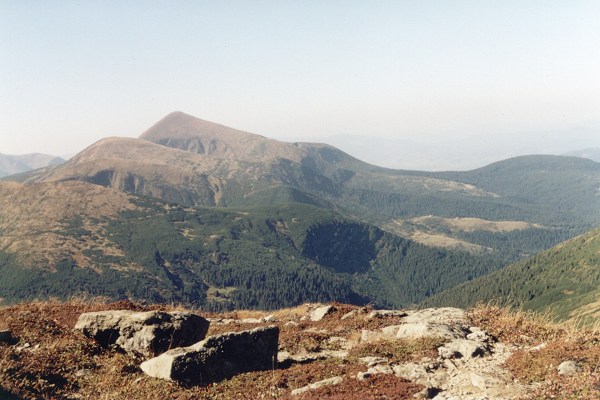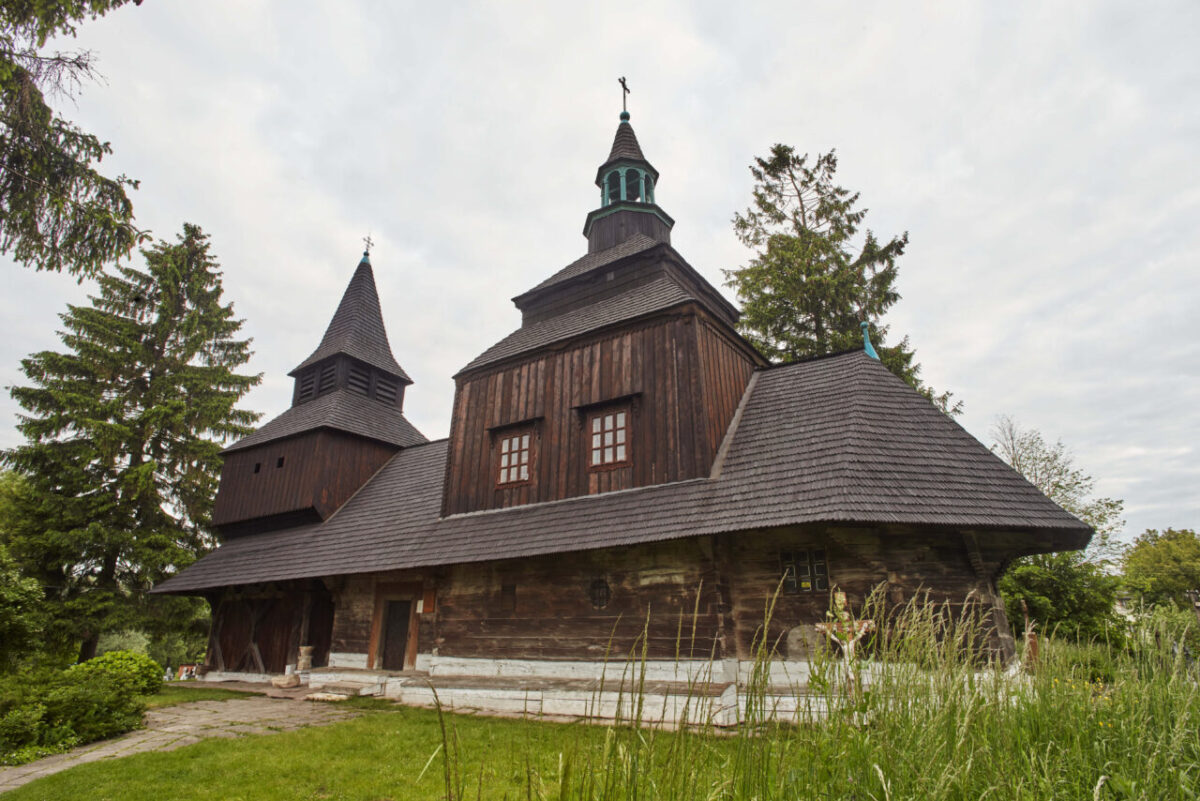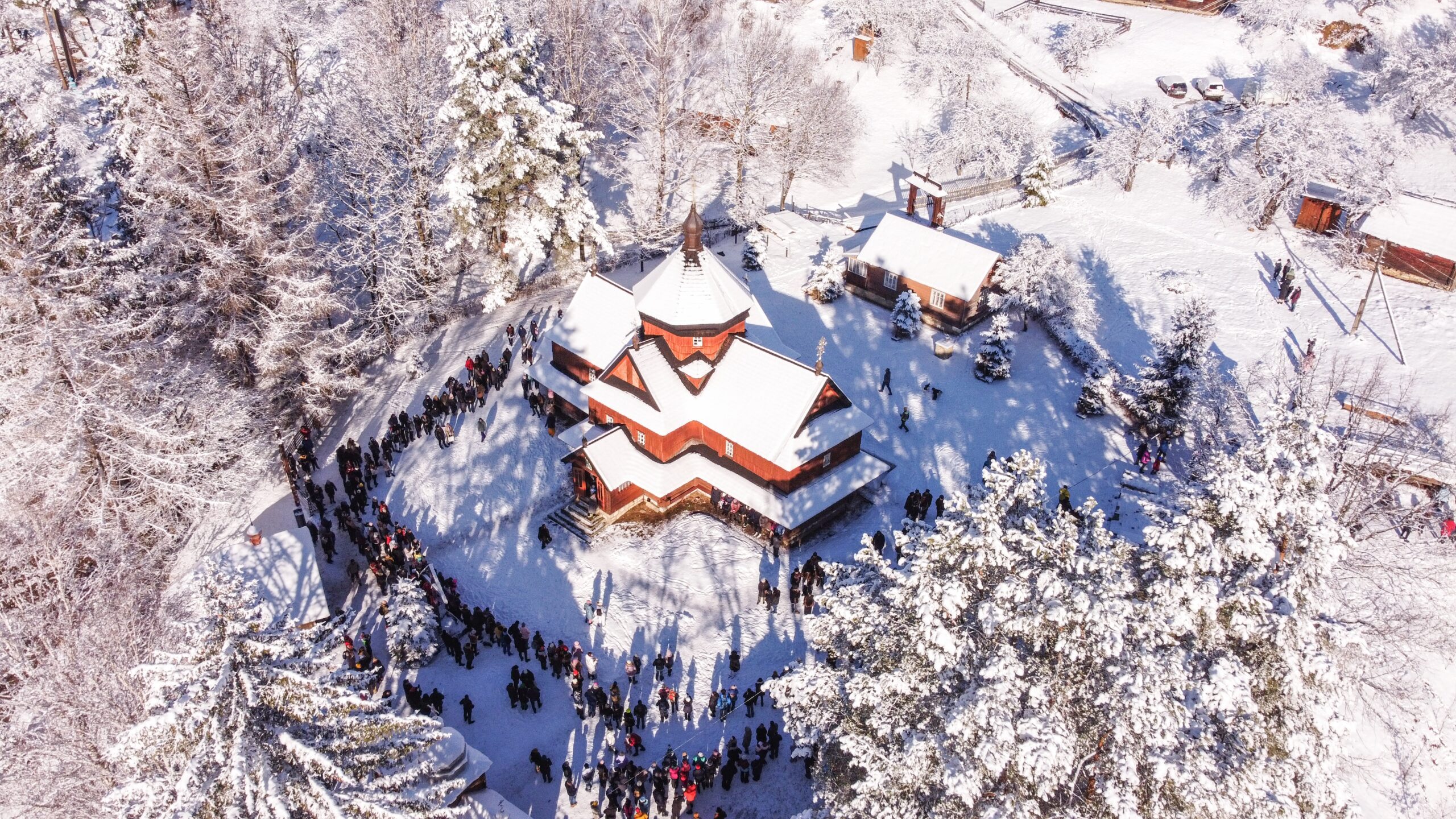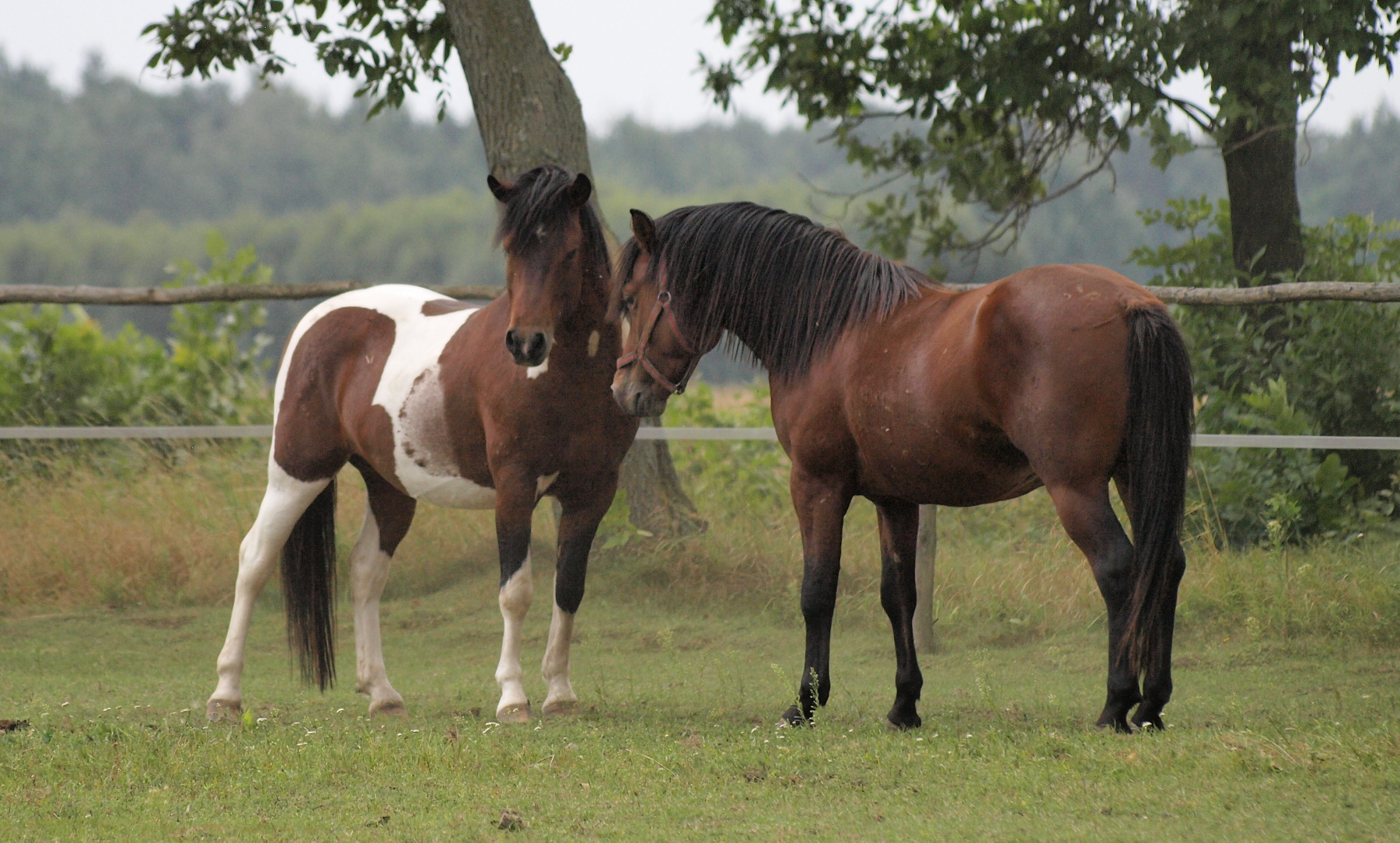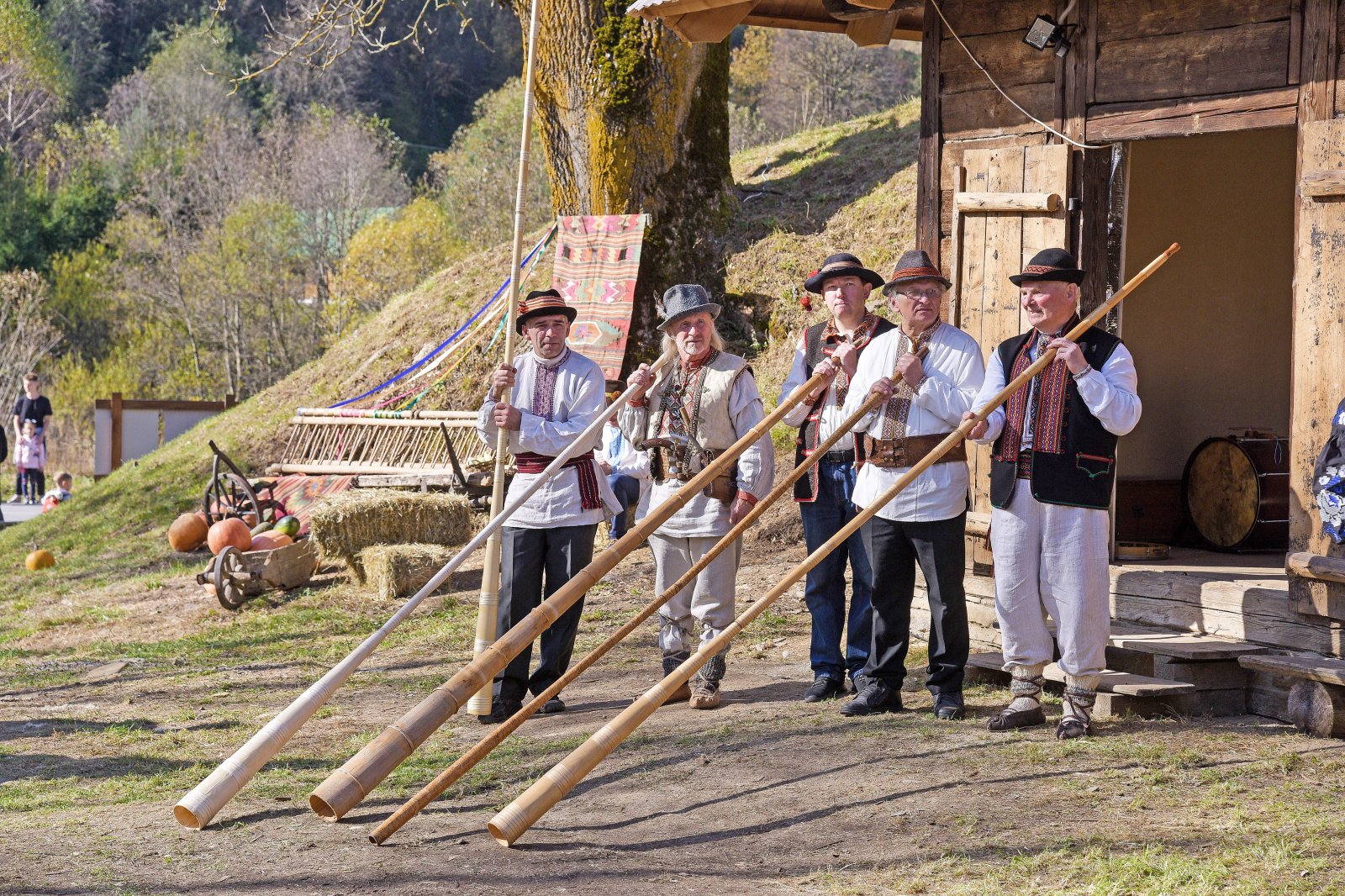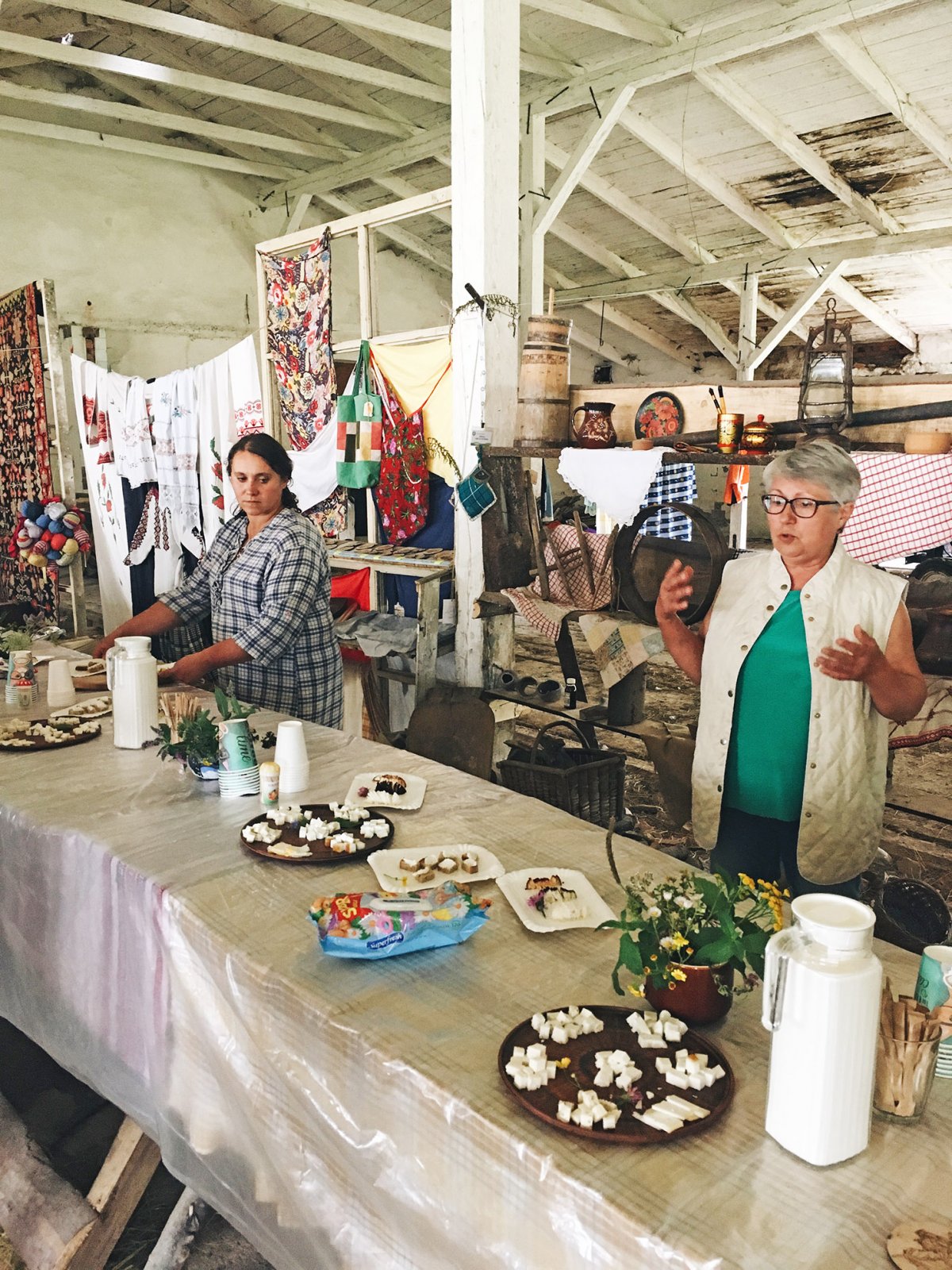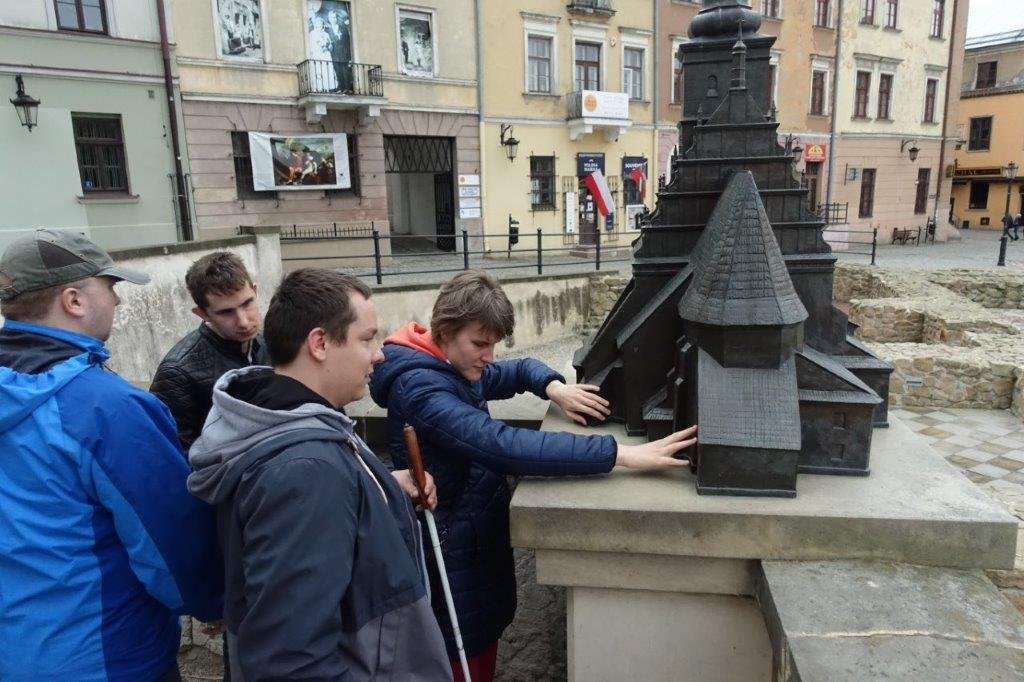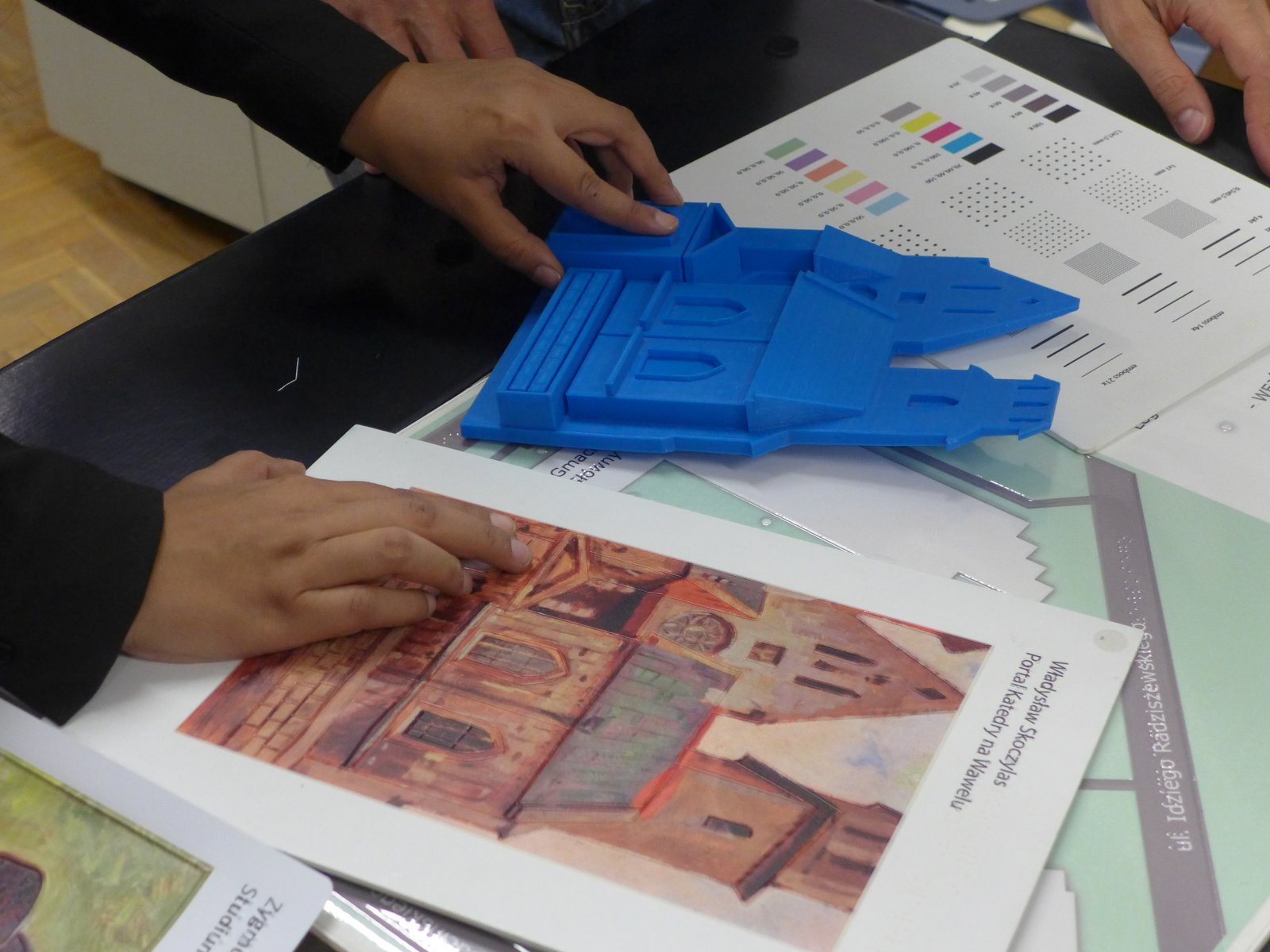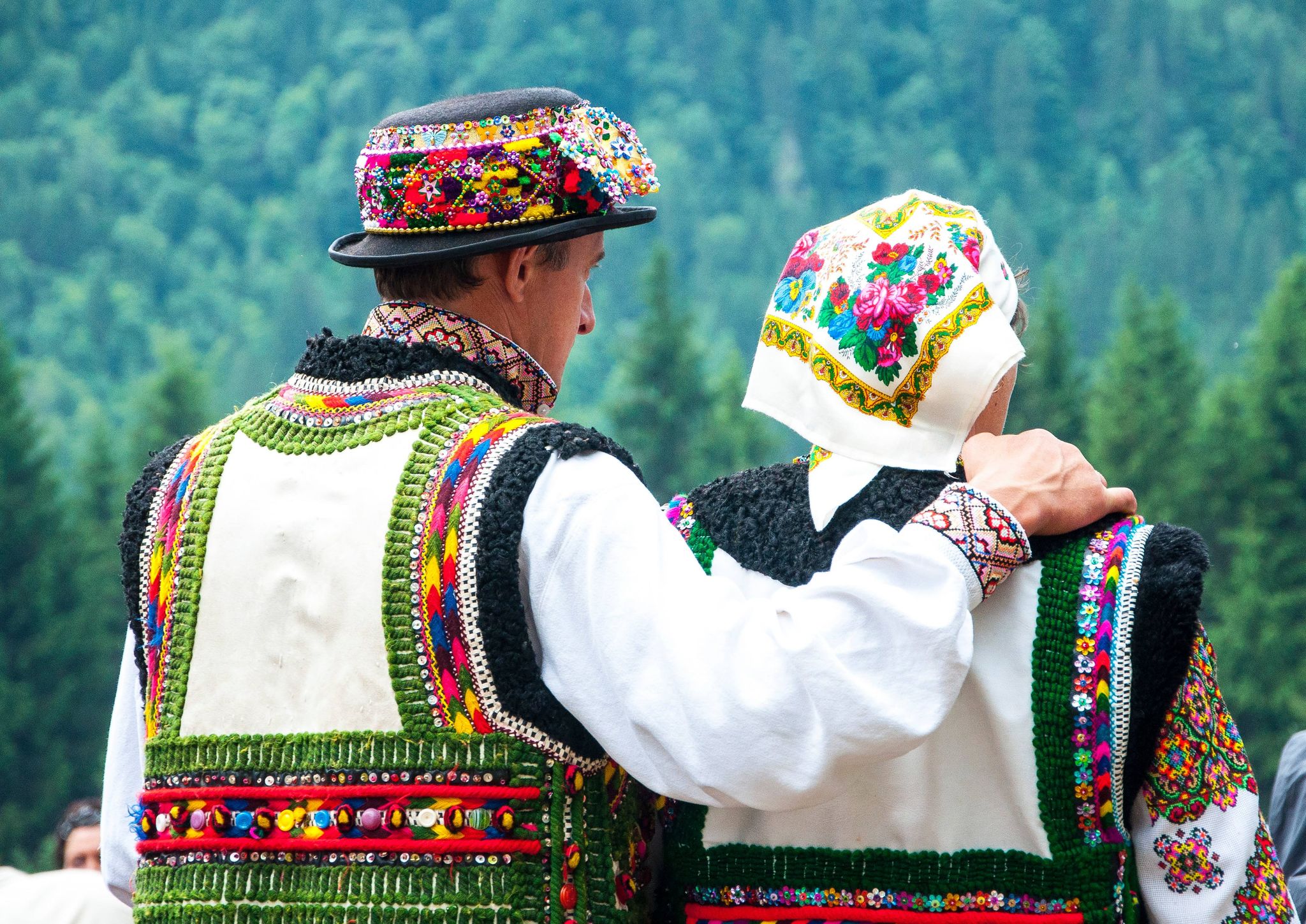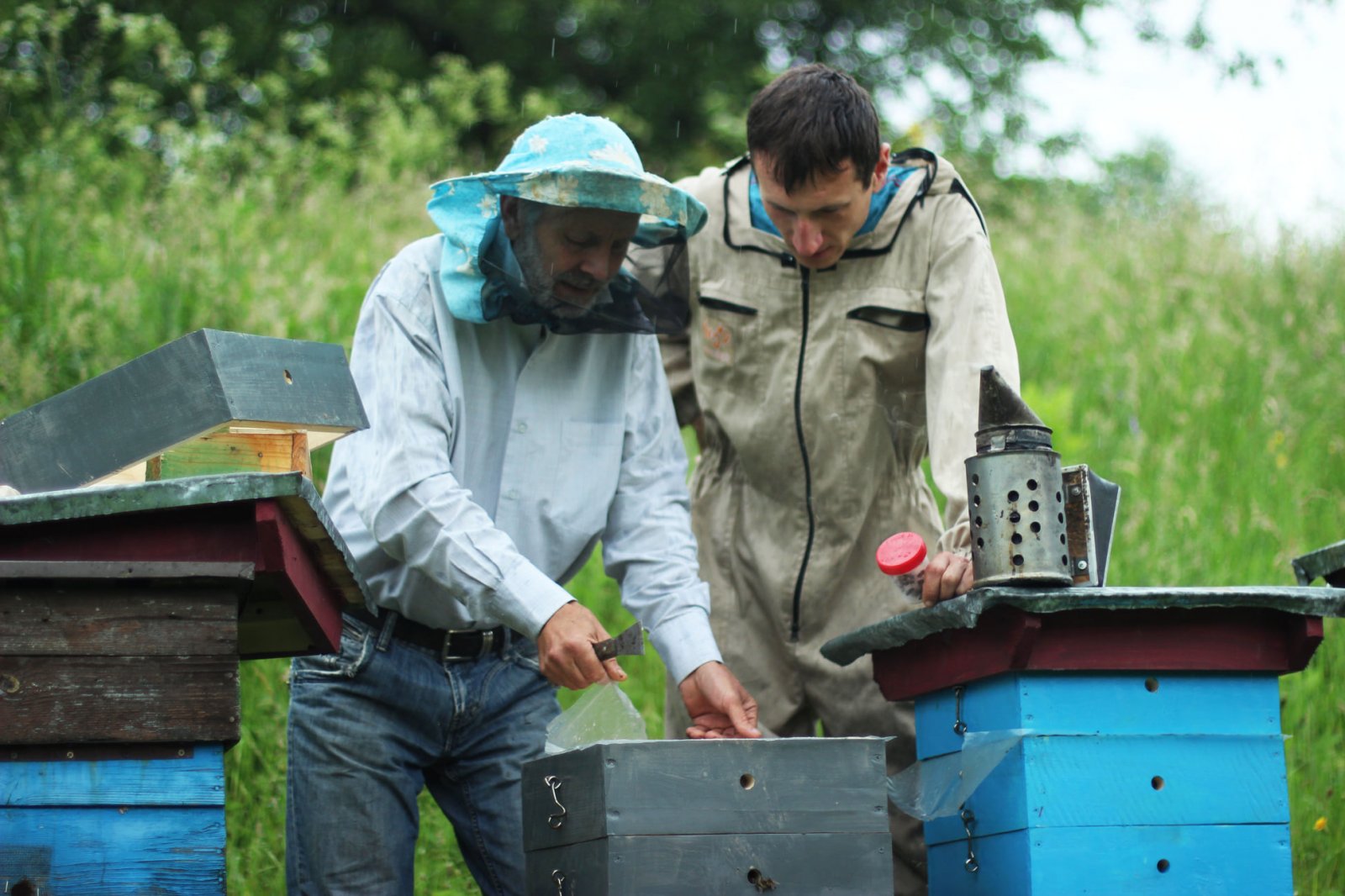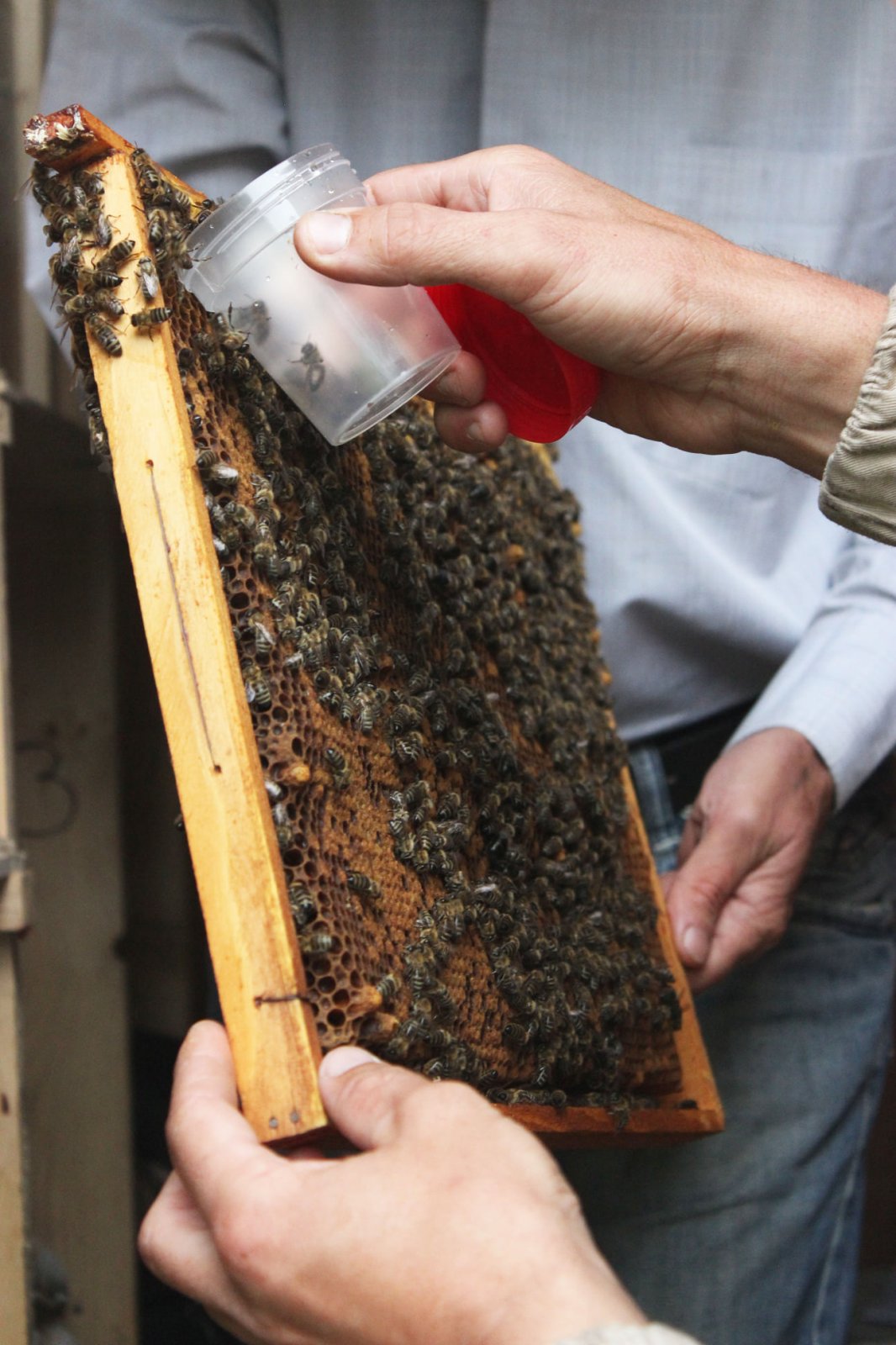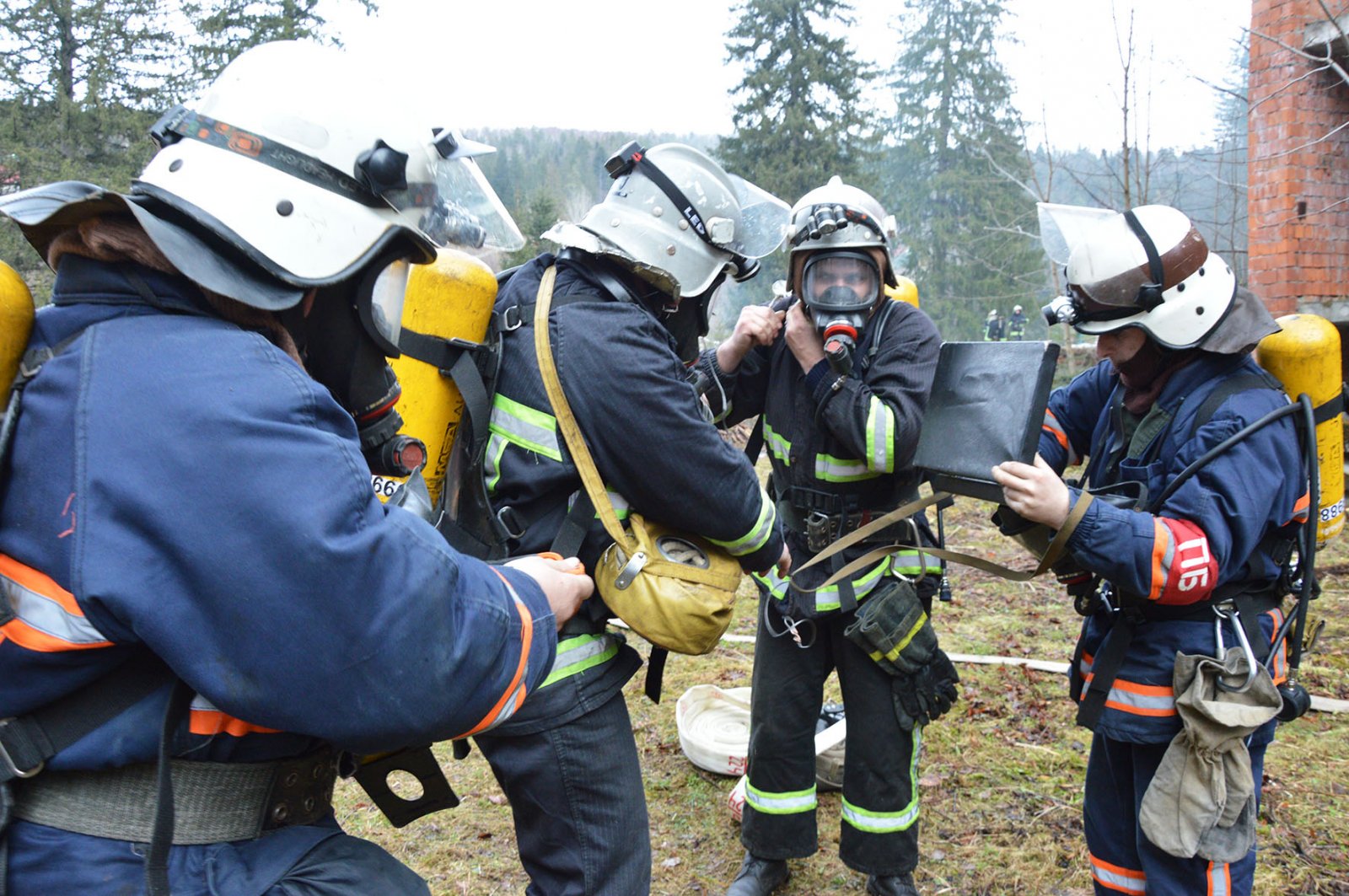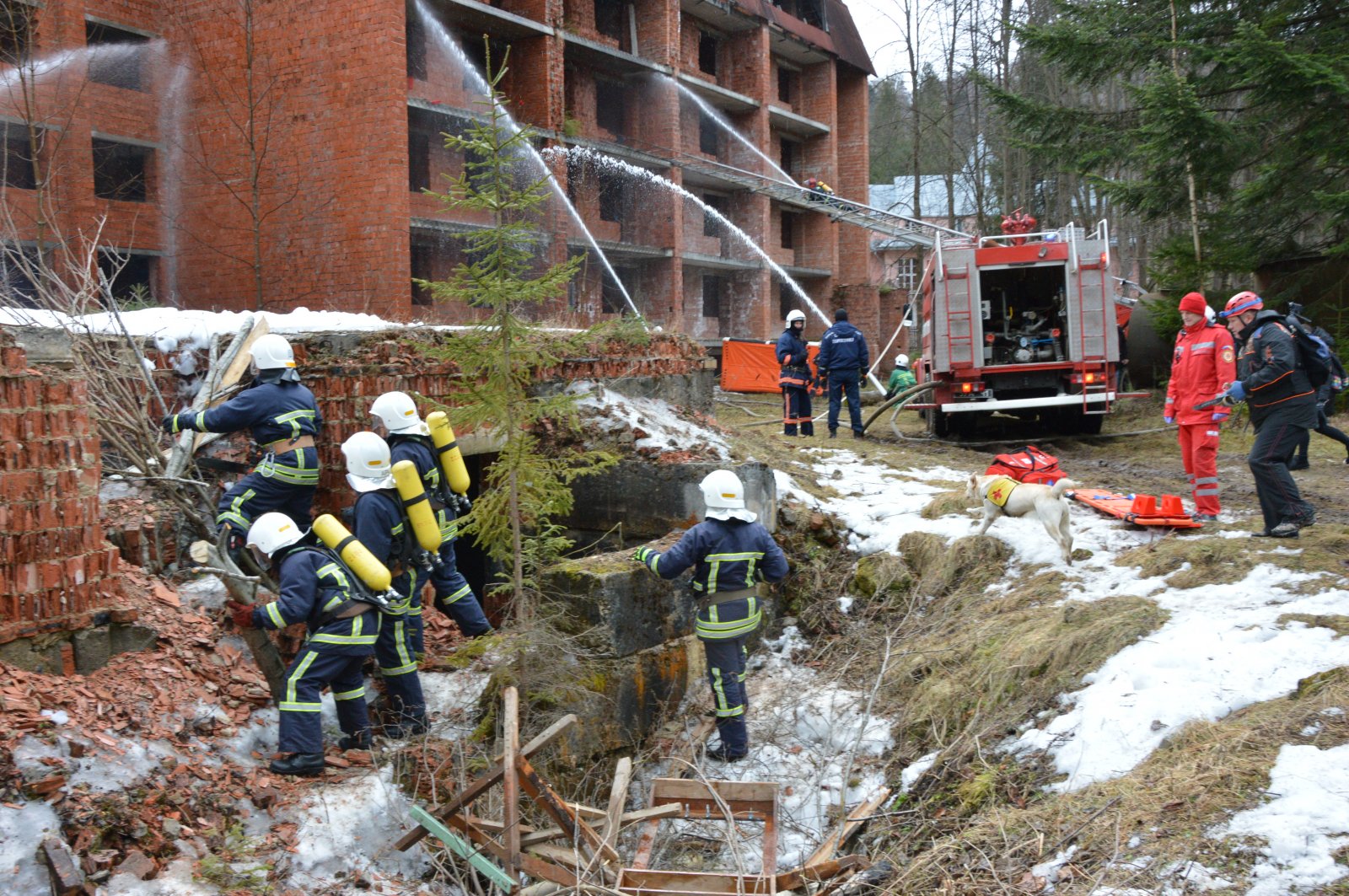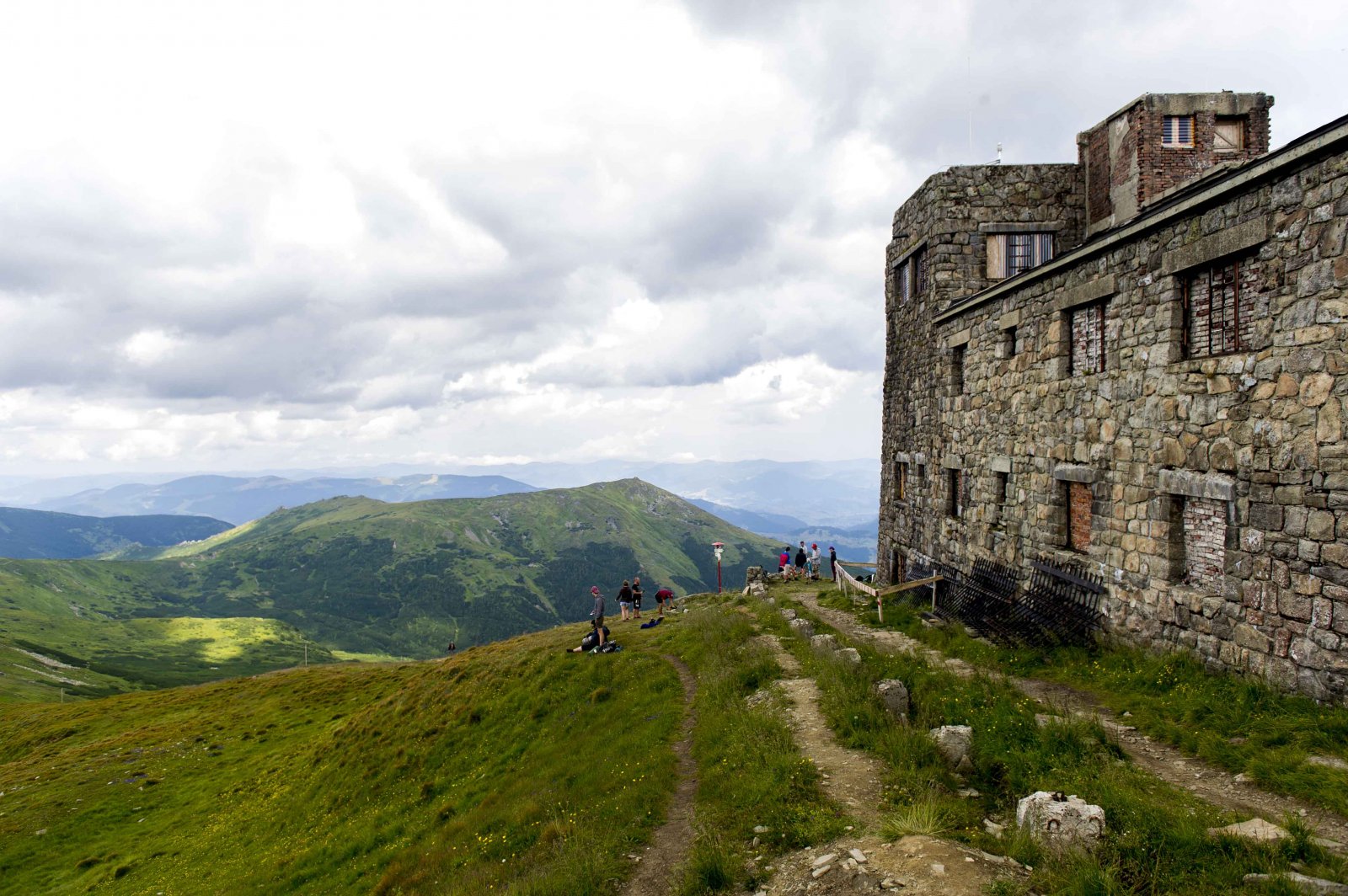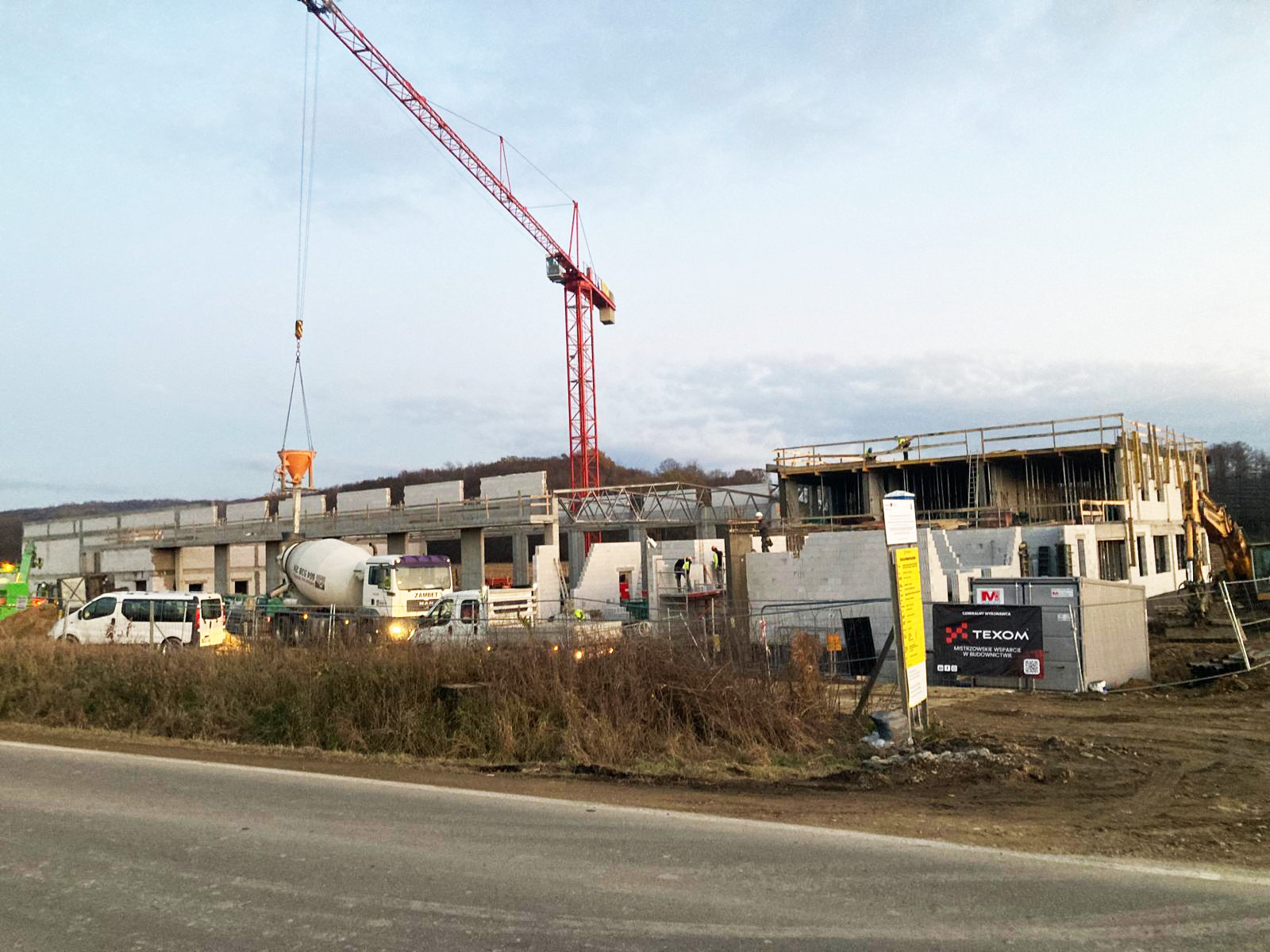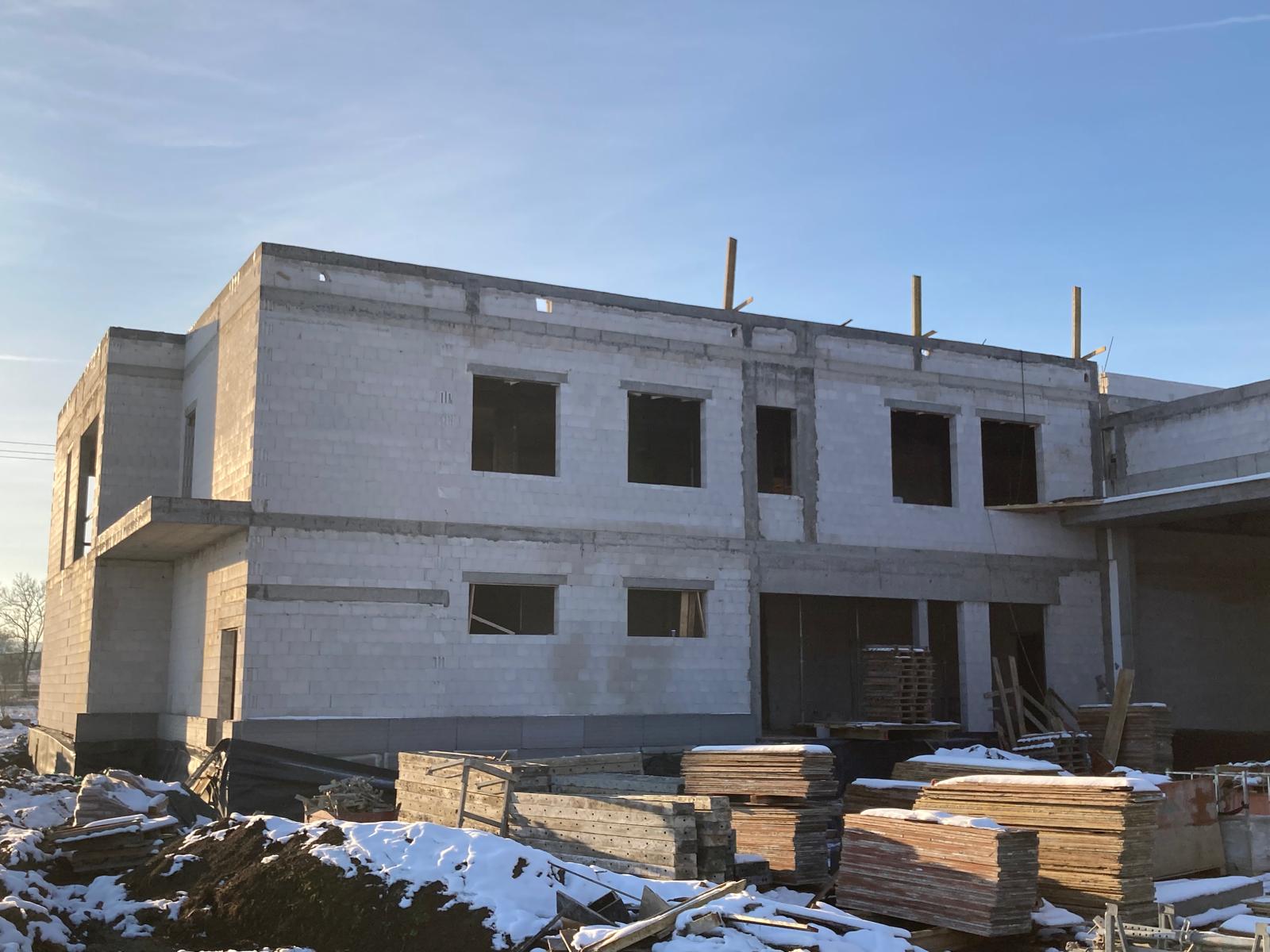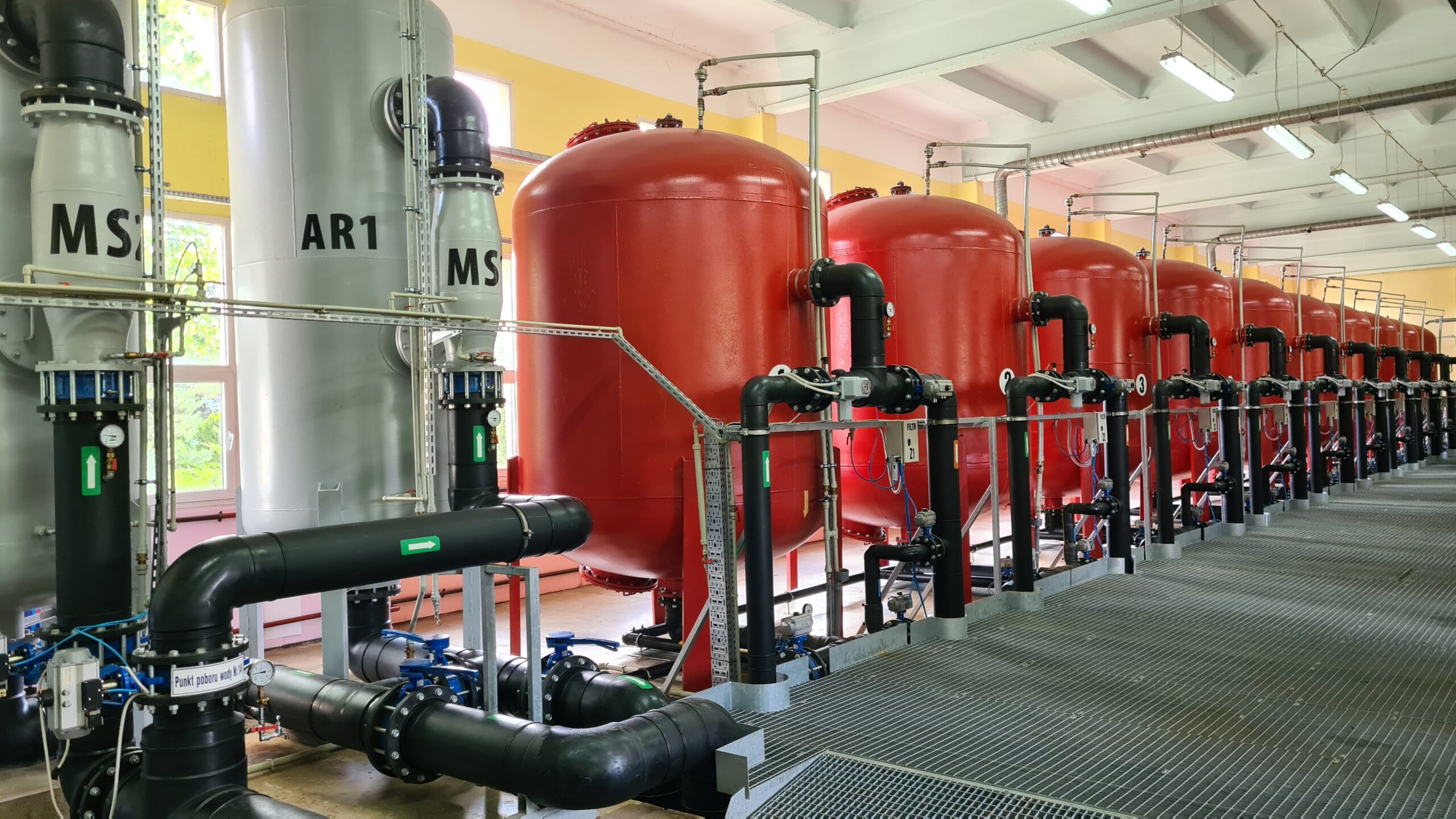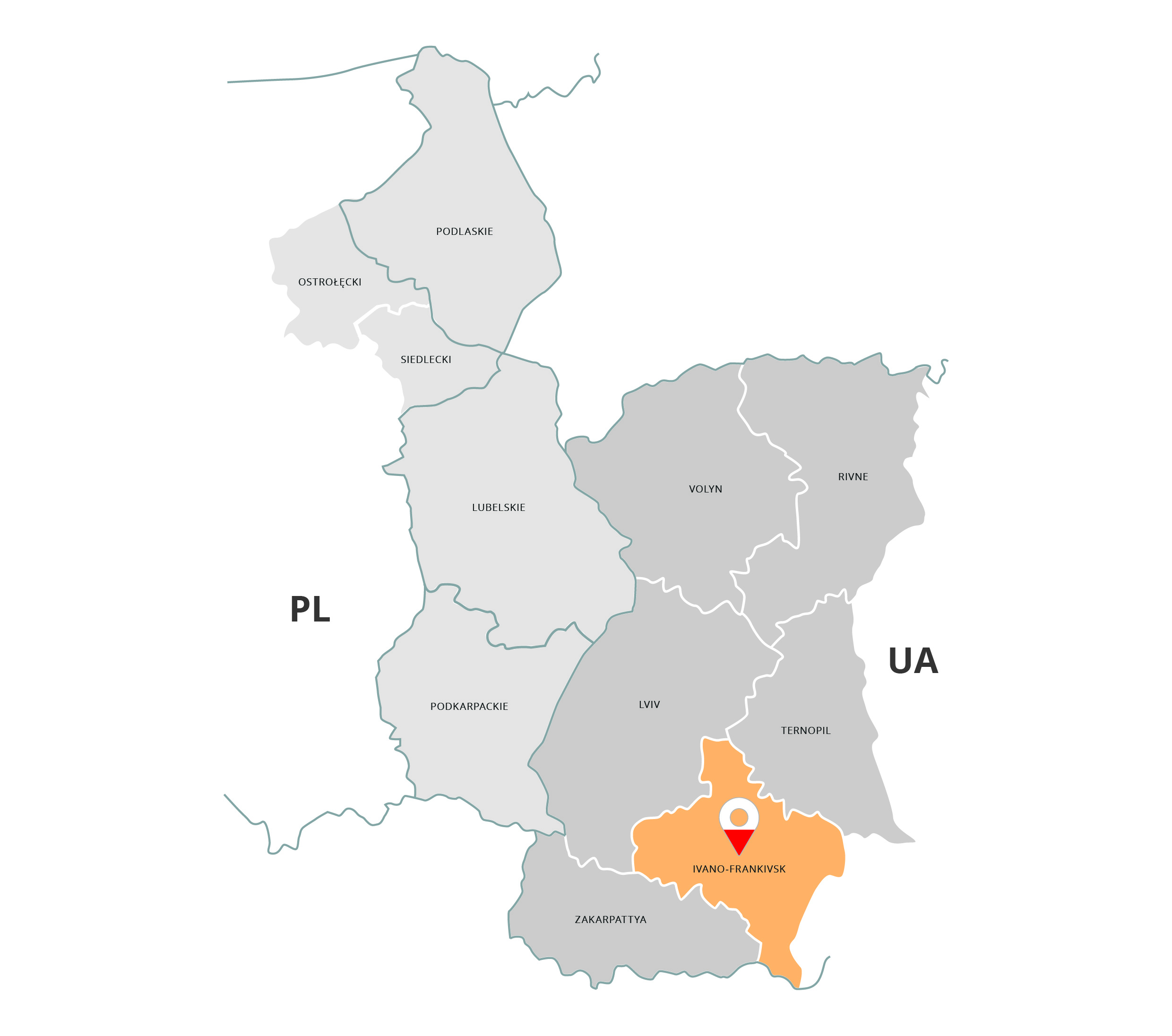In the very heart of western Ukraine lies the Ivano-Frankivsk Oblast – a land of mountains, legends and indomitable people. Covering an area of approximately 13,900 square kilometres, it is one of the smaller regions in terms of size. About one-third of its territory is occupied by the Carpathian Mountains, while the remaining two-thirds consist of foothills and plains. It is here that the highest peak of the Ukrainian Carpathians, Hoverla (2,061 metres), rises in the Chornohora range, attracting thousands of tourists each year who attempt to reach its summit.
- Always at the top
Thanks to its natural resources, the region’s economy is driven by the energy, petrochemical, refinery, oil and gas industries. The forestry, timber, pulp and paper, machinery, light manufacturing, food processing, and construction industries are also well developed. The Ivano-Frankivsk Oblast is a well-known centre for tourism and recreation, attracting enthusiasts of skiing and hiking, as well as those who appreciate authenticity and folk traditions. Ivano-Frankivsk city, where motorways and railway lines converge, is considered the gateway for tourists heading to the Carpathians.
The oblast prides itself on its cultural wealth – within its territory, there are over 3,500 protected monuments, including numerous wooden churches, several of which (such as the Church of the Holy Spirit in Rohatyn, the church in Nyzhnii Verbizh, and the church in Yasynets) are listed as UNESCO World Heritage Sites. The Hutsul culture is strongly present here, representing a unique heritage of the highlanders inhabiting the Carpathians, expressed through colourful costumes richly adorned with embroidery, music (played on traditional instruments like the ‘trembita’), local cuisine and religious practices. A distinctive symbol of the region is the Hutsul horse – small yet sturdy and resilient, inscribed on the intangible heritage list. Despite the passage of time, Hutsul culture remains vibrant and authentic.
Active cultural life thrives in the Ivano-Frankivsk Oblast – every year, a variety of festivals and art workshops take place. Performances by the Ivan Franko National Academic Music and Drama Theatre are renowned throughout Ukraine. The region has established an extensive network of educational, cultural and artistic institutions, and there are 3 national universities.
Since the beginning of Russia’s armed aggression against Ukraine, the Ivano-Frankivsk Oblast has welcomed over 150,000 people from areas affected by active hostilities and has become the new location for more than 300 relocated businesses. In these difficult times, the region provides reliable support, offering aid, shelter, healthcare and rehabilitation opportunities to those in need.
- Projects
Since 2006, the Ivano-Frankivsk Oblast has participated in successive editions of the cross-border cooperation programme between Poland and Ukraine. Under the PL-BY-UA 2014-2020 Programme, 9 projects were implemented in the region, with a total of approximately 1.6 MEUR in funding secured. These projects supported initiatives aimed at developing tourism, culture and safety, contributing to the strengthening of good neighbourly relations and the exchange of experience with Polish partners. These included projects focused on cultural and natural heritage, such as Rosettes, which worked to preserve the cultural uniqueness of the Carpathians, and TouchingThePast, which supported visually impaired individuals in accessing cultural resources and participating in cultural life. This project was also a finalist in the REGIOSTARS competition organised by the European Commission. The GORGANY_HERITAGE project focused on promoting Boyko heritage. A key component of the initiative included research that took into account the region’s cultural and historical context, alongside a comprehensive sociological analysis. The KoSol and Fire projects paid tribute to tradition. Both recognised the potential of traditional crafts and cultural heritage amid a lack of sufficient knowledge and promotion. Their authors found opportunities for local development through tourism by organising festivals and creating new tourism products. The CarpathianBee project focused on supporting and protecting the smallest beneficiary of the PBU Programme – the Carpathian bee, while Horses&Nature invested in the intangible heritage of the oblast – the Hutsul horse. The PBU Programme also included projects aimed at improving safety. The SECINCARP project created a Polish-Ukrainian system for disaster prevention and response, while PIMReC, located on the Pip Ivan peak, transformed a former observatory into a mountain rescue facility. Given the absence of a shared border between the oblast and the Republic of Poland, the implementation of such joint projects plays a particularly important role in fostering Ukrainian-Polish interregional cooperation.
More information about all PBU 2014-2020 projects can be found here.
In the current edition of the Programme for 2021–2027, 9 projects will be implemented in the region, with a total value of as much as 9.2 MEUR. These include 6 regular projects under the priorities of HEALTH and ENVIRONMENT, and 3 large infrastructure projects under the priorities of TOURISM, ACCESSIBILITY and ENVIRONMENT. Two of the large infrastructure projects have already begun implementation. One of them, located in the village of Vyhoda – TrainToNature, focuses on the Carpathian narrow-gauge railways, which are a valuable part of the region’s historical and tourist heritage. The creation of the Narrow Gauge Railway Station Museum as part of this project will be another step towards preserving and promoting this legacy. The second large infrastructure project – UP2FireSafety, is a unique initiative that brings together four Ukrainian oblasts (Ivano-Frankivsk, Lviv, Zakarpattya, and Ternopil) as well as the Podkarpackie Voivodeship in Poland. Its aim is to establish a joint Ukrainian-Polish integrated system for monitoring, preventing and rapidly responding to forest fires in the Carpathian region. Another project focused on sustainable and innovative fire control solutions is FABRICS.
Thanks to the IFSynergy project in Ivano-Frankivsk and CleanWater in Burshtyn, the water supply and sewage systems will be improved, which will have a positive impact on the environment. The ParksMatter project aims to develop green spaces and create green infrastructure in urban areas. As part of the project, Youth Park in Ivano-Frankivsk will be revitalised.
As for projects in the field of HEALTH, the RescueCars project in Ivano-Frankivsk aims to improve medical transport and ensure timely diagnostics, while the SOS4Children project will provide access to appropriate medical care for children with disabilities. Thanks to this project, the existing Child Health Centre in Dolyna will be modernised and equipped with new specialised devices to enable comprehensive treatment and rehabilitation. Young patients will have access to new medical services: rehabilitation, sensory and speech therapy, psychological support and palliative care.
A strategic road project (under the ACCESSIBILITY priority) will also be implemented in the oblast, in cooperation with partners from Lviv and Zakarpattya Oblasts, as well as the Podkarpackie Voivodeship in Poland. The project scope will include repairing the road surface running through Bolekhiv Town for more than 7 km, as well as road signage and the creation of pedestrian crossings.
To gain an even better understanding of this fascinating region, we invite you to a conversation with Vitalii Ilchyshyn, Deputy Head of the Ivano-Frankivsk Regional State Administration, where we discuss the development opportunities offered by the Programme and the implementation of cross-border projects.
How important is cooperation with Poland for the Ivano-Frankivsk Oblast? In which areas does the greatest potential for cooperation exist?
VITALII ILCHYSHYN: The Republic of Poland is one of the main strategic partners for Ivano-Frankivsk Oblast due to shared cultural traditions and historical heritage, as well as closely aligned economic interests. We cooperate with the Podkarpackie, Opolskie and Lubuskie Voivodeships. The raions (districts) and cities of Prykarpattya have signed and successfully implemented partnership agreements with Polish districts and communes. Areas of cooperation include culture, education, healthcare, social projects and humanitarian aid. We have particularly felt the support and assistance of the Polish nation since the beginning of Russia’s full-scale military invasion of Ukraine.
Since 2007, the region has been actively participating in the Cross-border Cooperation Programme Poland – Ukraine. Our country has chosen the path of European integration, and such programmes are one of the key tools for implementing this strategic direction.
Regarding future priorities, we are currently working on establishing three rehabilitation centres and a veterans’ centre in the region. We also consider the development of alternative energy, tourism, preservation of cultural heritage, studying the experiences of economic activity zones/investment zones in Poland, creating a solid waste management system and developing barrier-free spaces as priority areas of cooperation.
Which of the projects currently being implemented in the region under the current Programme are the most interesting and innovative?
During the 2021-2027 programming period, 8 projects are already being implemented in the oblast. Their themes are significant for our region. In particular, projects under the HEALTH priority are important for ensuring high-quality medical care for both the region’s residents and soldiers wounded during the war with the Russian aggressor, as well as internally displaced persons. A remarkable initiative is the UP2FireSafety project, which aims to create a unified Ukrainian-Polish integrated system for monitoring, preventing, and rapidly responding to forest fires in the Carpathian region. The TrainToNature tourism project is ground-breaking for us. The Carpathian narrow-gauge railways are a unique historical and tourist heritage of the region, so establishing the Narrow Gauge Railway Station Museum in Vyhoda will be a further step towards preserving and promoting this heritage.
How would you assess the impact of the implemented projects on local communities?
The Programme is a powerful tool for the development of local communities and for improving the lives of residents. Each project is important not only in terms of its substantive content but also as a learning experience. The knowledge gained during implementation serves as a springboard for more large-scale projects in the future. Communities are learning how to work with European funds, build partnerships, use EU support instruments and share experience and knowledge. We understand that for many communities, these projects will become one of the main drivers of development.
We encourage you to visit the attractions offered by the Ivano-Frankivsk Oblast and to take advantage of the results of all the Programme’s projects. Follow our website, where we will regularly publish new episodes of the series “Get to know the PL-UA Programme regions”.
The previous article can be found at the following link:
Get to know the PL-UA Programme regions – Mazowieckie Voivodeship
